Got your headphones’ cord twisted, curled, and deformed? These tips will help you get it straightened out quickly and keep it that way.
So you’ve been wearing your headphones a lot lately, but you noticed that the cord is in a weird curly shape, making it shorter than usual.
But as you try to straighten out the cord, it pulls itself back to the twisty mess you found it in. And, let’s be honest, having that curly mess in the cord is not the visual you’d like to see when wearing your headphones in public.
In this article, we’ll discuss how you can straighten out your headphones’ cord and keep it that way. Let’s dive right in.
How to Straighten Out Your Headphone Cord?
Unstraight headphone cords are usually caused by two things: twists and tangles.
Cord twists happen as a result of natural daily use. As you spin and rotate your headphones, the cord also rotates—which in turn builds tension. The cord will then collapse to relieve that tension, resulting in curls, bends, and other deformities.
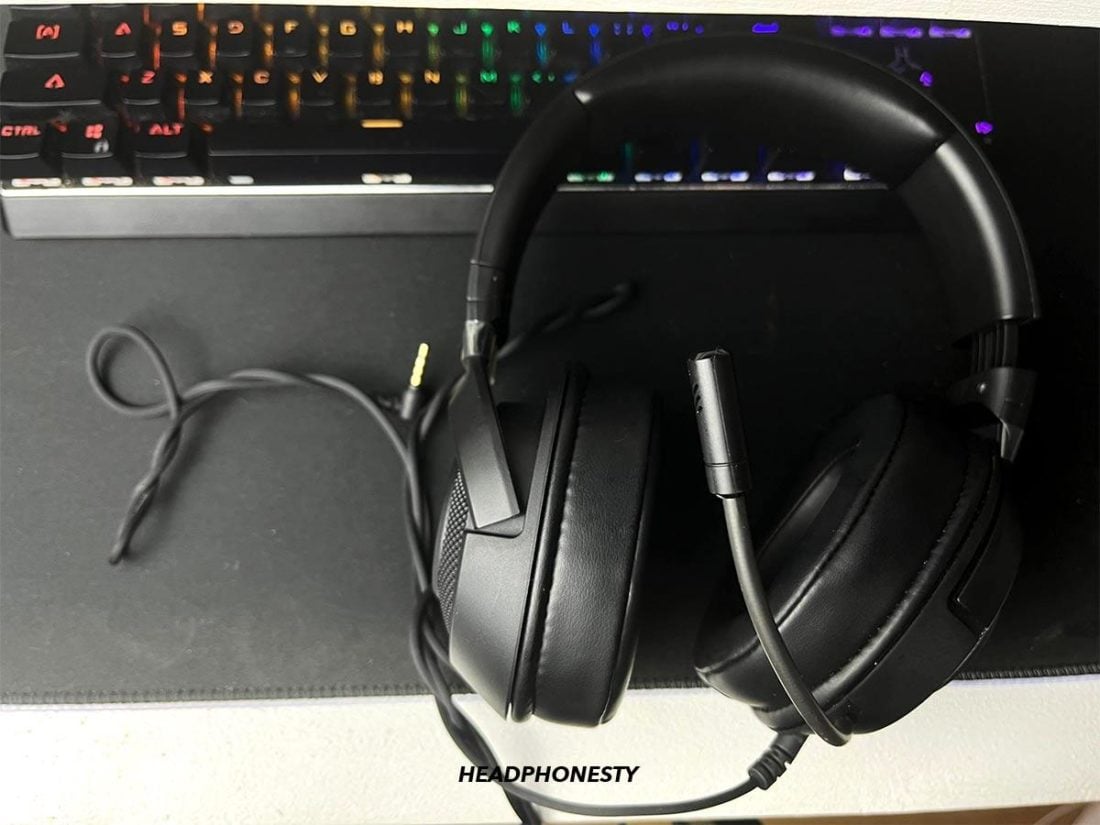
On the other hand, your headphones cord may look deformed or curled when you just got them untangled or if they have been coiled too tightly.
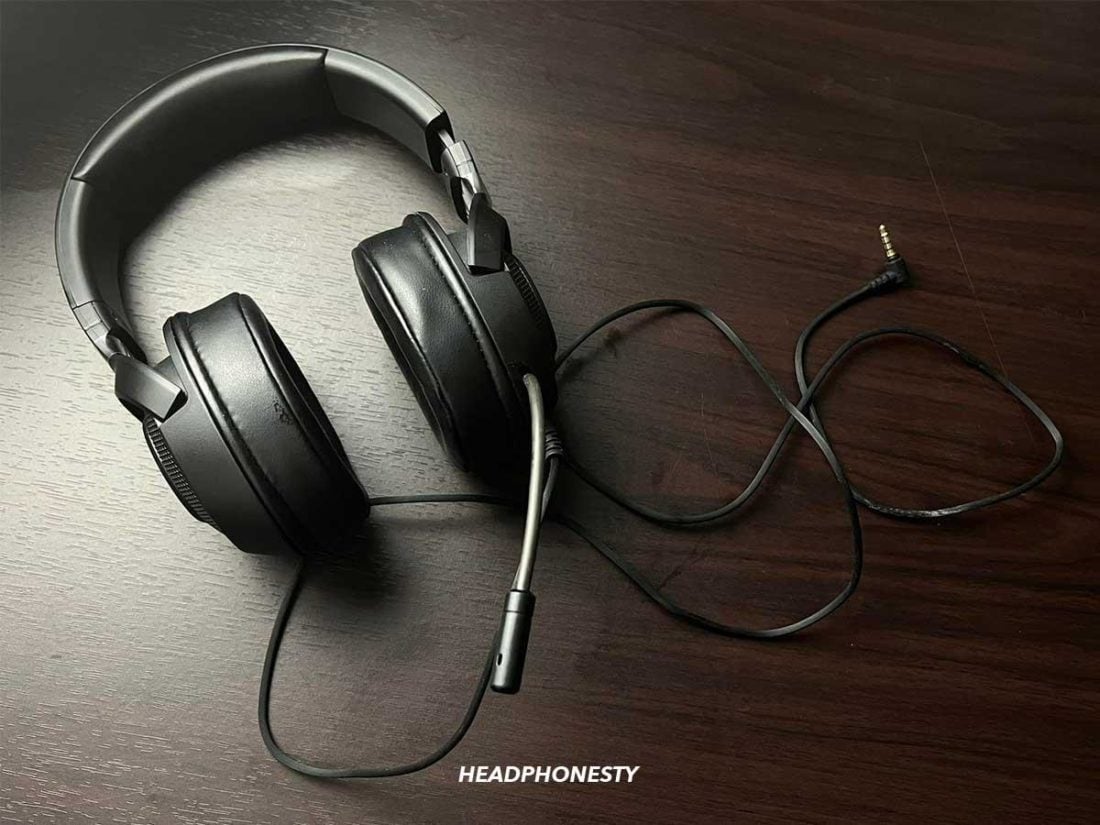
Whichever’s the case, there are a few hacks you can try to straighten out your headphones’ cord. Let’s go through each of them!
- Run your fingers across the twisted cord
- Hang your headphones freely
- Set the headphones’ cord straight using a weight
- Lay the headphones’ cord on a flat surface
Run your fingers across the twisted cord
The most common way to quickly fix a twisted headphones’ cord is by using your fingers. This should be fairly easy – here’s how you can do it:
- Grab the cord between your thumb and index finger.
Holding headphone cord firmly - Keeping a mildly firm grip, slowly and thoroughly pass the cord through your fingers, moving from the base of your headphones to the end where the jack is.
Passing through the cord using fingers to untwist - Repeating this process 2-3 times should significantly untwist your headphone cord.
Hang your headphones freely
The next method you can try, is hanging your headphones freely to let the cable un-twist itself. Here’s how:
- Hold the plug end of your headphones’ cable. If you have big headphones, you can hold them by the headband instead to avoid straining the cable.
Holding the headphones by the headband - Let the other end of the cable hang freely in the air.
Headphone cord hanging freely in the air - Wait for your headphones to start spinning, or use your hands to create momentum, which will un-twist the cable.
- Once the spinning slows down, gently run your fingers along the cable to help complete the un-twisting process.
Run your fingers along the cable to untwist
Set the headphones’ cord straight using a weight
This method works best after you’ve initially un-twisted and straightened your headphones’ cord as much as possible, but still notice some curling or deformation.
In that case, you can use a slightly heavy object to get your headphones’ cord back to its original shape. Here’s how to do it:
- Hang your headphones from a higher point. It can be anything like a banister, coat hanger, doorknob, or towel rail.
Headphones hanging - Attach a slightly heavy object near the plug using adhesive tape, a binder clip, or a piece of rope.
Earbuds case attached to the headphones plug to add weight. - Leave your headphones hanging with the weight for 24-48 hours to see results.
Depending on the thickness and sturdiness of your headphones’ cable, you can adjust the object you use to weigh it down.
Keep in mind that the keyword here is slightly weighted. You’re also working with gravity, so use just enough weight to avoid pulling down the cable with too much force.
Lay the headphones’ cord on a flat surface
If you don’t have a place to hang your headphones for the method above, you can still straighten out your headphones’ cord on a flat surface like a table or on the floor. Here’s how to do it:
- Lay your headphones on a flat surface, and keep the cord as straight as possible.
Headphones on a flat surface - Put a book or other slightly weighted objects on the plug end of the cord. This will keep the cord from curling and twisting. If you’re doing this to a pair of earbuds or IEMs, add another book to hold the earpieces in place.
Book weighing down on the headphones to keep the form - Wait for about 48 hours, and you should get a fully straightened-out cord.
Why Should You Keep Your Headphone Cord Straight?
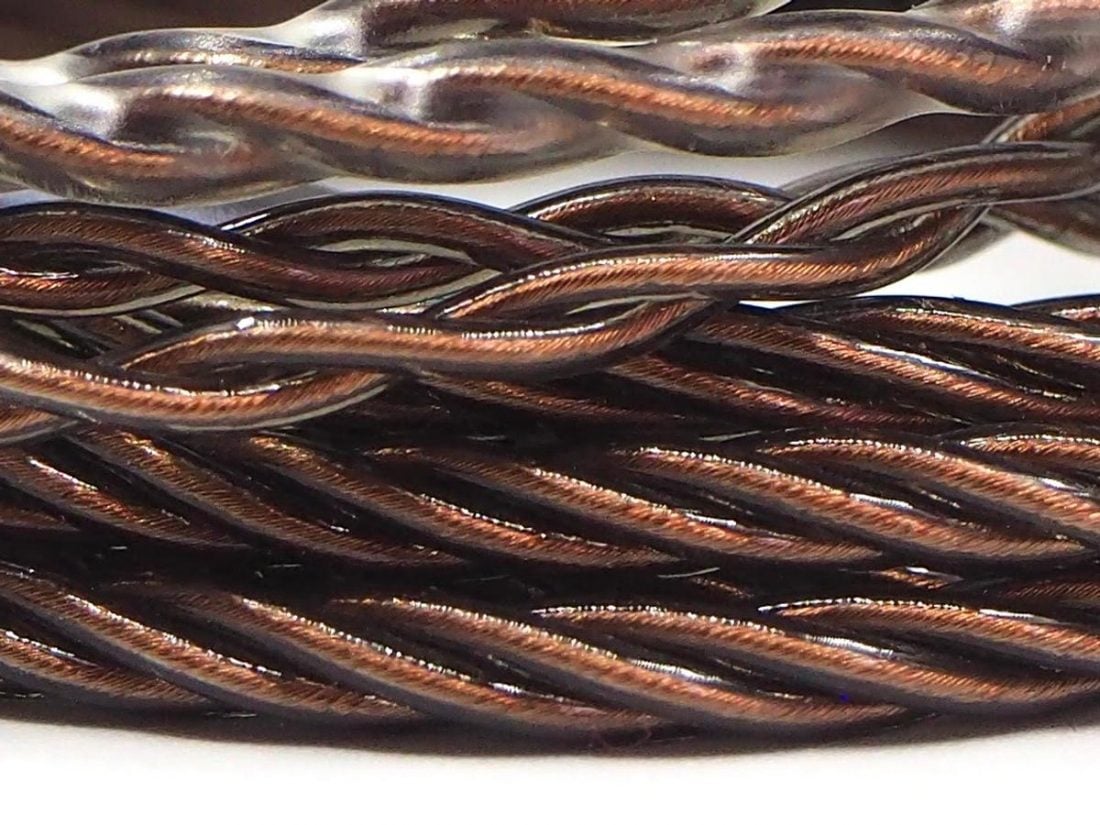
Some people might have no issue living with twisted headphones’ cords. As long as they can plug the headphones’ jack into their phone and wear it comfortably, all is good.
However, there are valid safety and longevity reasons why you should prevent your cords from getting twisted too badly.
For one, when the twists build up too much or too often, they damage the cable’s outer jacket.
As a result, this exposes the internal wiring, which can lead to the breakage of the internal wiring. Additionally, the exposed copper wire also comes with a risk of short circuits.
Eventually, all of the above damages will cause your headphones to have sound issues, require repair, or be rendered flat-out broken. In that case, you should probably consider getting a pair of tangle-free earbuds as replacements.
But if you decide to stick to conventional headphones (not tangle-free ones), we’ve compiled some tips to prevent your headphones’ cords from twisting.
How to Prevent Cords From Twisting and Curling
Twists that aren’t immediately taken care of can cause unwanted things to happen to your cord. So, to prevent them from building up and causing trouble, here are several things you can do:
Store your headphones properly
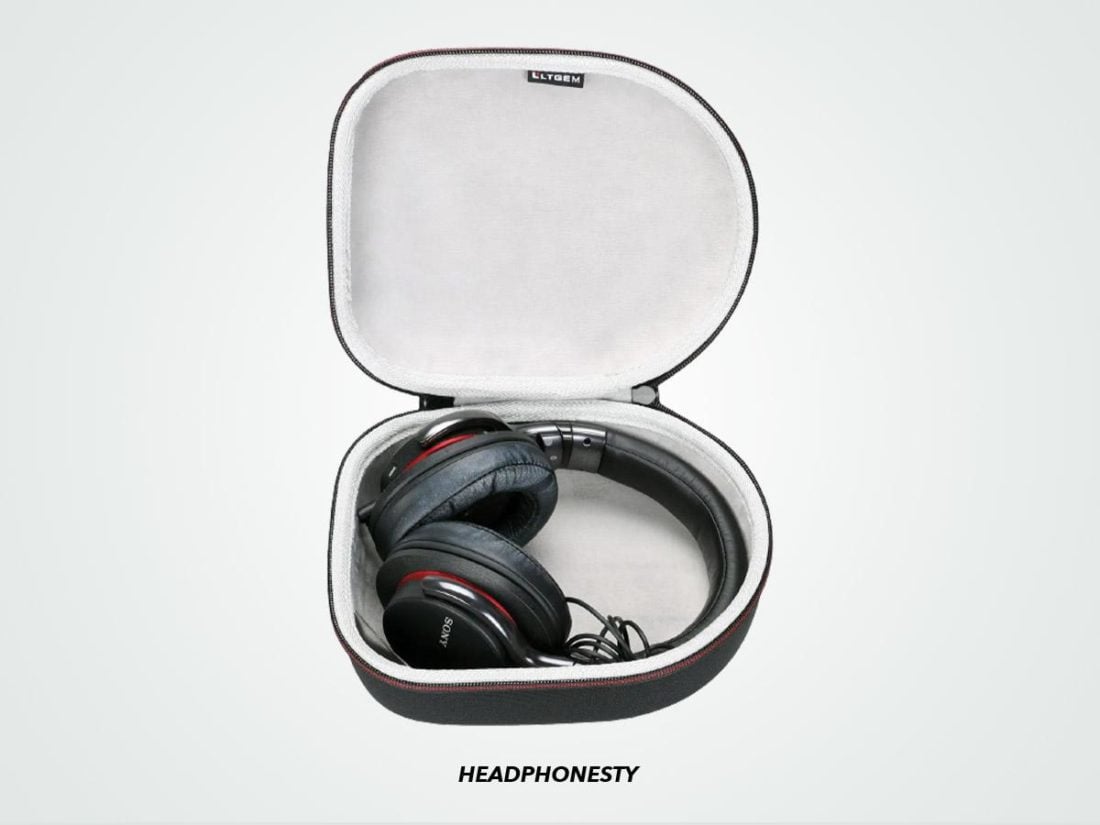
Having dedicated storage for your headphones when you’re not using them can go a long way in preserving their lifespan.
When you use your headphones on the go, keeping them in a dedicated case or carry bag is the safest storage method.
Being inside a case or bag means there’s not much room for your headphones to toss around. In addition, some of them also come with designated slots that keep your cords safe from twists.
When your headphones’ cord doesn’t have too much room to move, there’s less possibility of them getting twists and tangles.
On the other hand, if you use your headphones in a relatively static setup, like on your desktop PC or with a mixer set, consider having a dedicated place to store them.
Accessories like headphones stand or desk hook can ensure that the twisted cord can stretch out while they’re not in use – as long as you let the cord hang freely.
Coil headphones the right way
Coiling your headphones’ cord properly before storing them also helps to prevent kinks. Most of us coil our cords around our hands, twisting the cord with every single turn, as demonstrated by the London School of Sound in the gif below.
This method is incorrect as each coil creates a twist in the cord, which becomes apparent when you unfold it.
Instead, try the ‘over-under’ method, which is commonly used by backstage production crews worldwide. Here’s how:
- Start with the end of the cord in one hand, then slide your other hand a little way down the cord and make the first coil.
- For the next coil, twist your hand so your palm is facing outwards. Grab the cord with your palm in that position. Then as you’re bringing the cord up to coil it, twist your palm back inwards.
- Continue alternating both steps until you completely wrap the cord.
The great thing about the over-under method is that every initial coil is countered by the loop you make with your twisted palm. As a result, there’s no tension building up in the cord, and when unwrapping it, no twists are present.
Be mindful of your headphones usage
The curling or twisting of headphones’ cords is often a result of natural everyday use. Throughout the day, we’re constantly adjusting the position or orientation of our headphones.
Perhaps we’ll set them down if we have to step away from our desks, then put them back on again. As we do this, we sometimes accidentally turn them in the process, leading to twists in the cable.
Turning them anywhere between 0-360° is enough to set off the twisting effect on the cords, especially if it happens all the time.
If you have a somewhat consistent situation when using your headphones (e.g., on a desk with your computer or at a studio), try building a habit of always storing them in the same position and facing the same way.
But if you’re using your headphones on the go, your best bet is to be extra cautious about how you’re handling and storing your headphones, with the tips mentioned in the previous sections.
As an extra measure, you can also install small tubes along your headphones’ cord to prevent them from getting twisted. You can also wrap some yarn along the cords to get the same result, but with a unique aesthetic as a plus point.
Conclusion
After reading this guide, you should know how to straighten your headphones’ cord and keep them safe from nasty twists buildups. The next time you put your headphones on, just remember that the slightest movements can lead to a twisted mess.
Once you build up the habit of keeping your headphones in the same orientation and letting the cord unfurl after each use, you can potentially have a longer-lasting pair. As a bonus, you’ll also get fewer headaches from untwisting headphones.
Do you know other tips for keeping the headphones’ cord twist-free? Let us know in the comments!
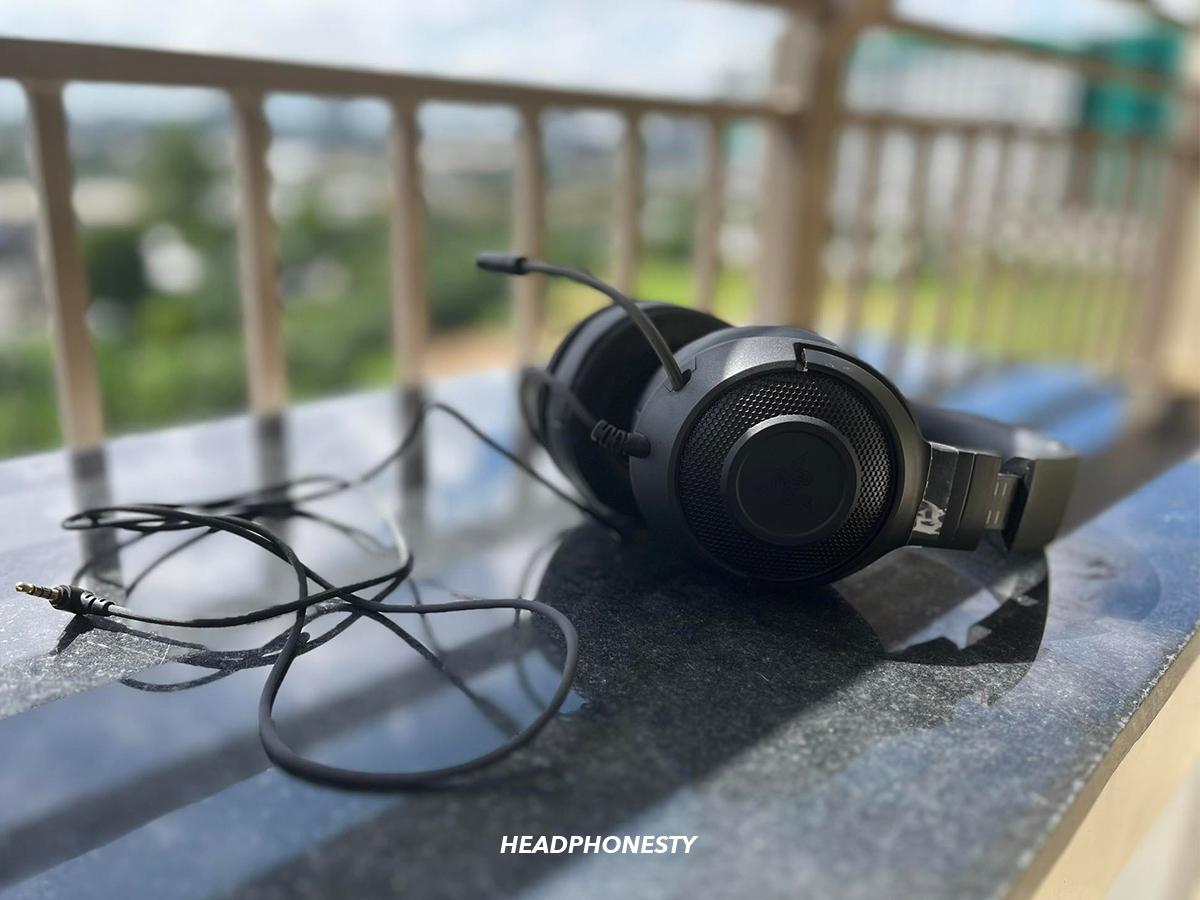
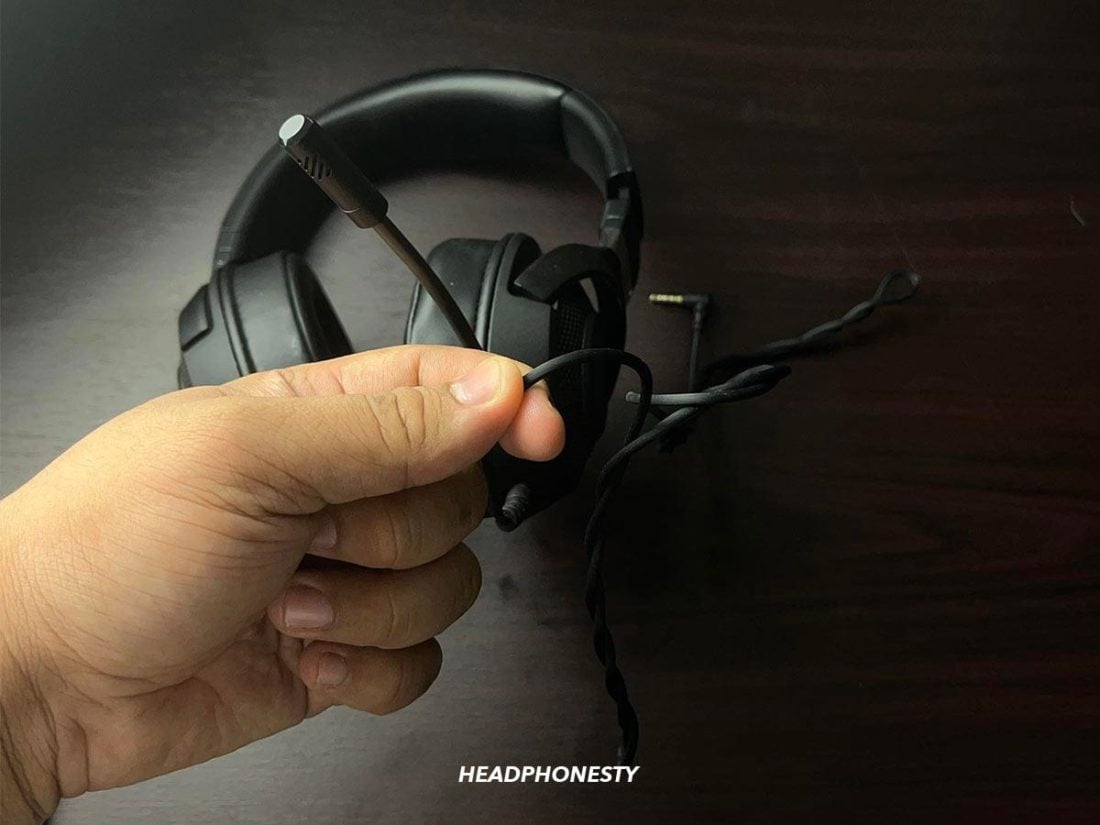
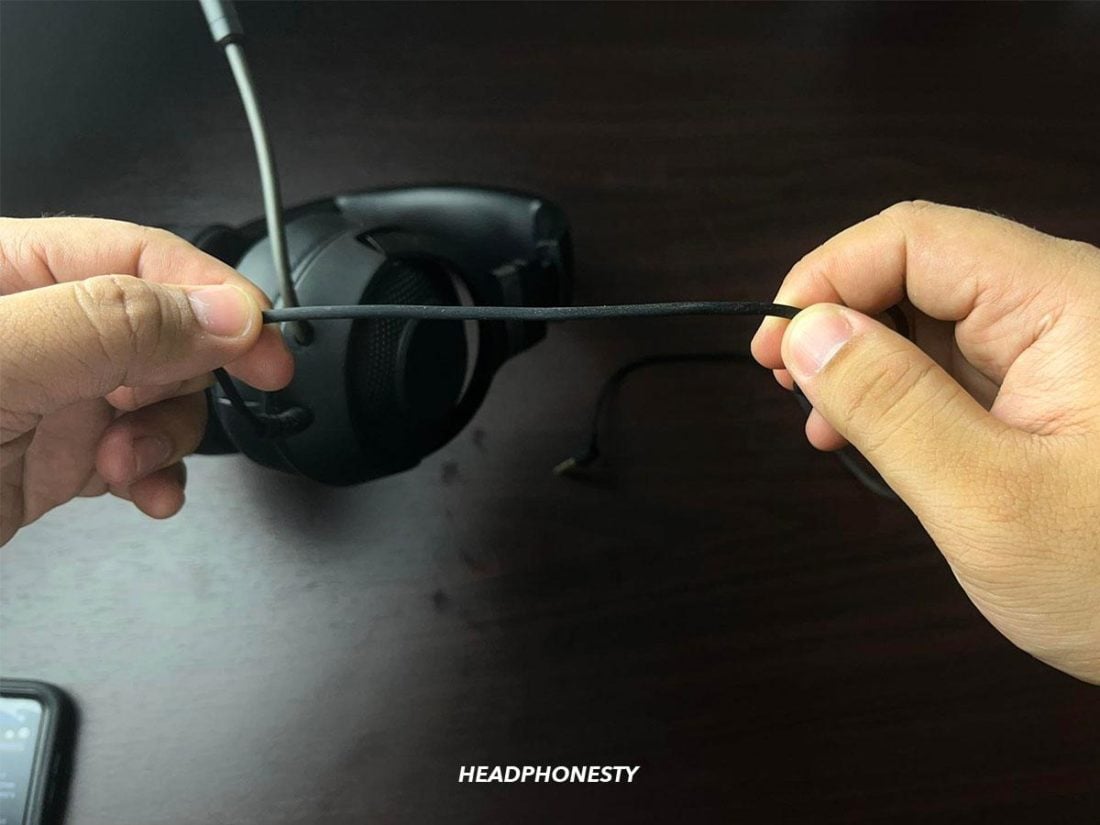
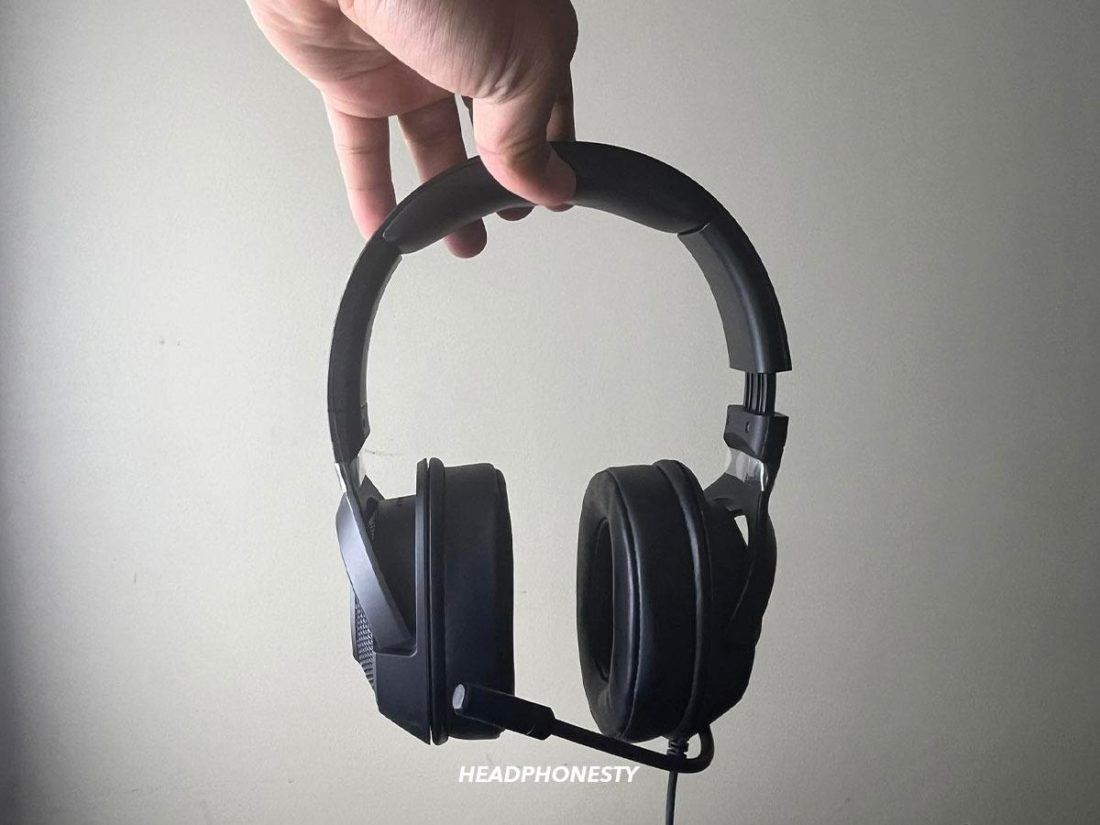
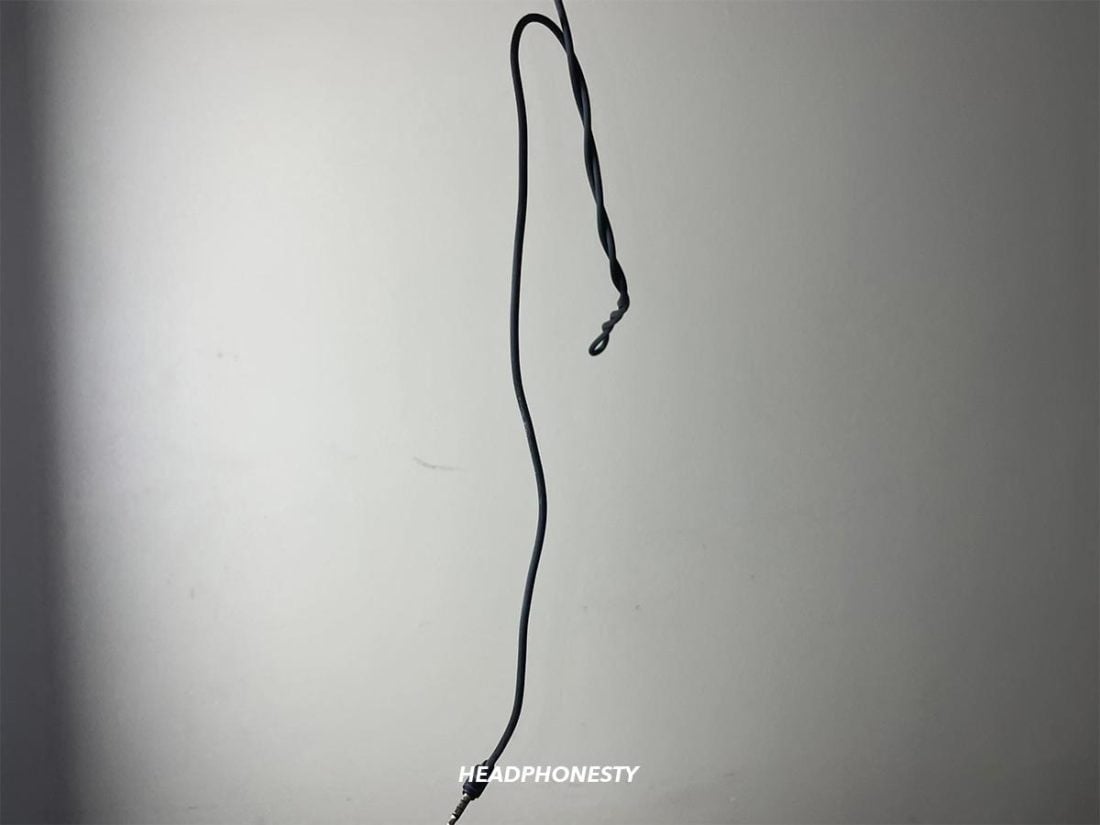
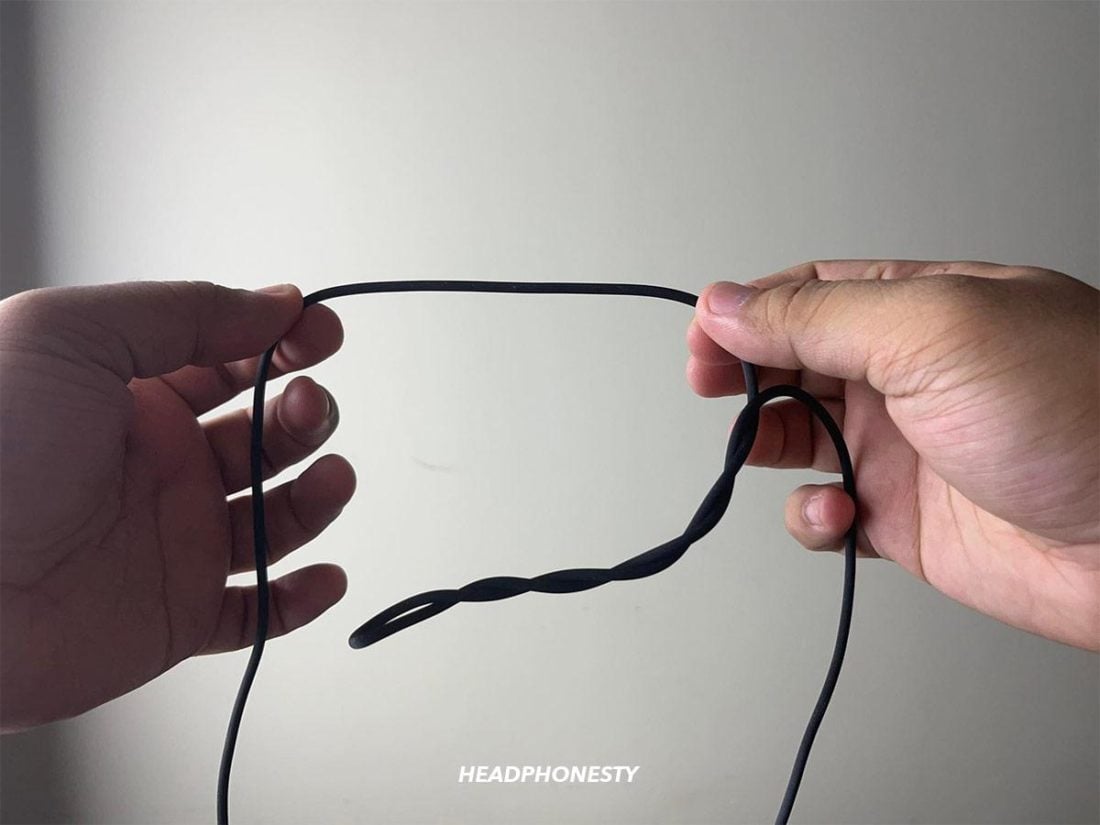
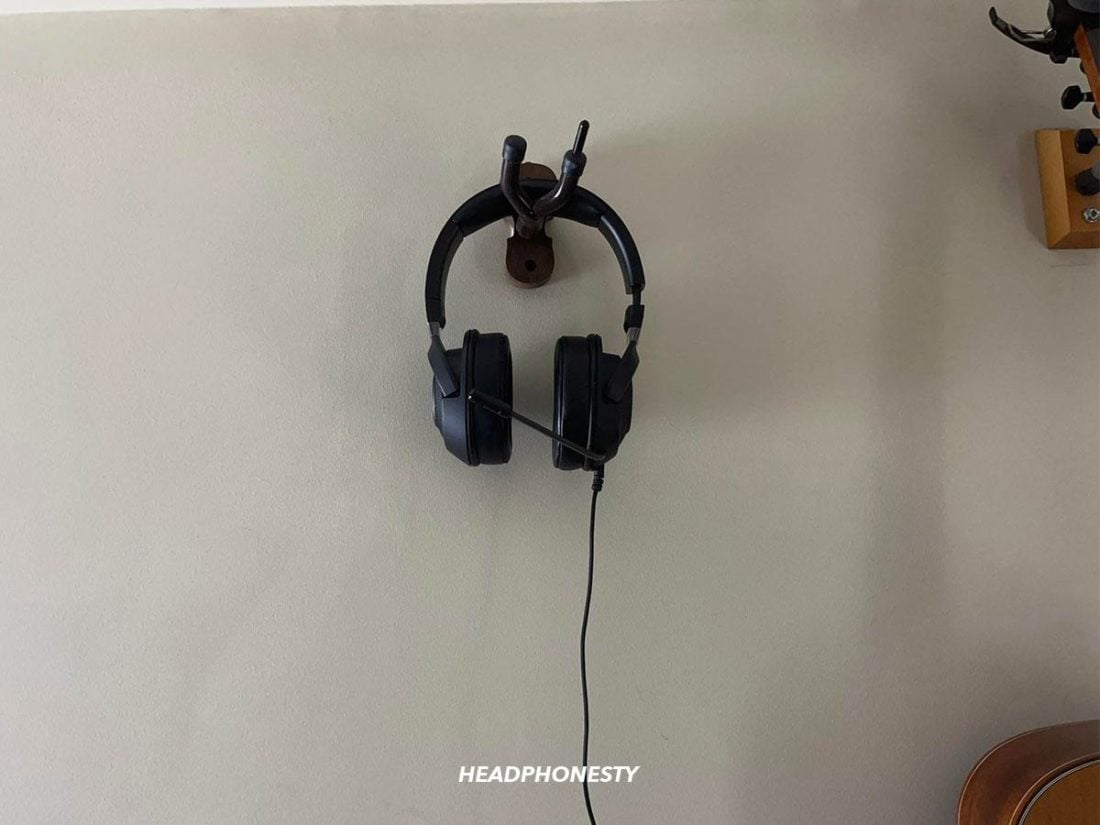
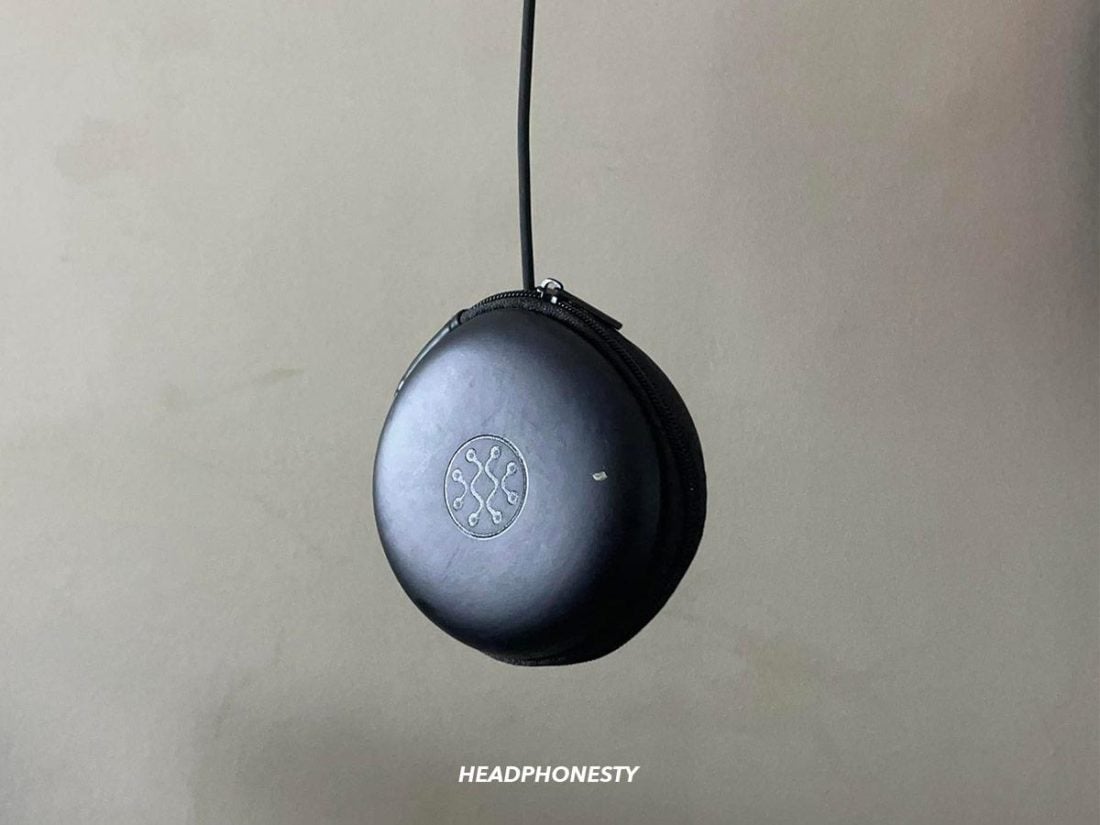
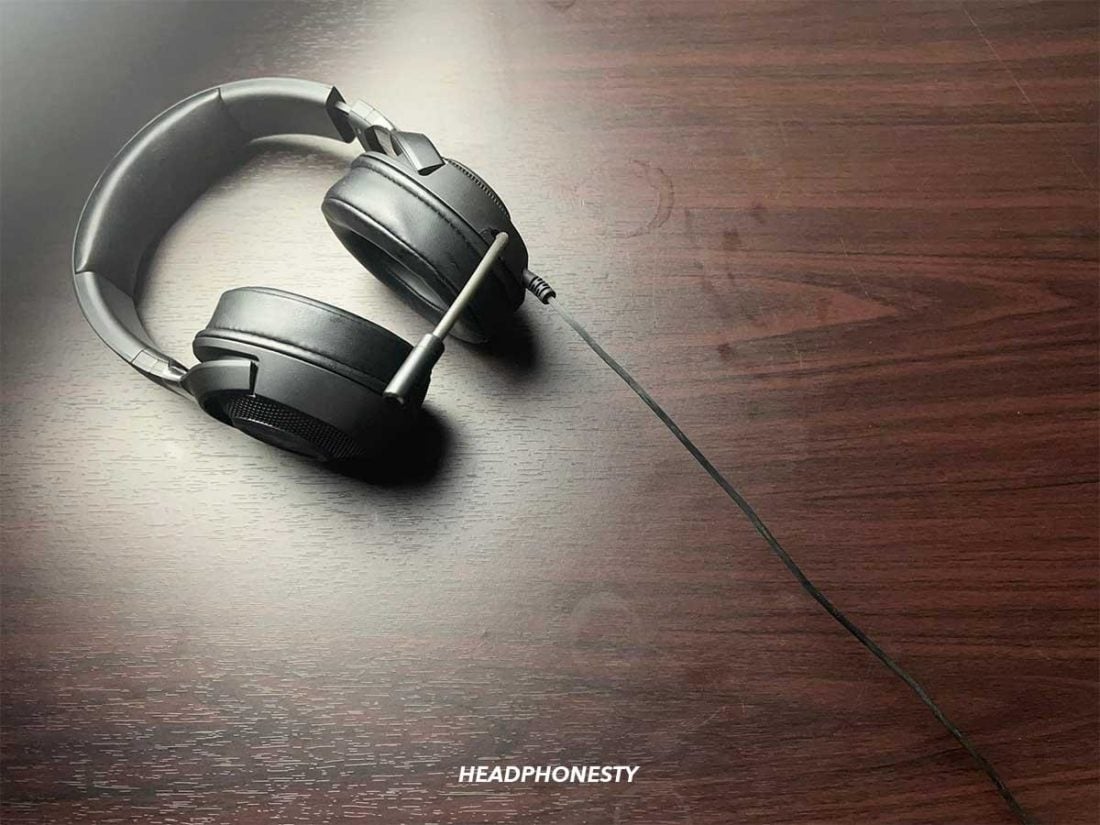
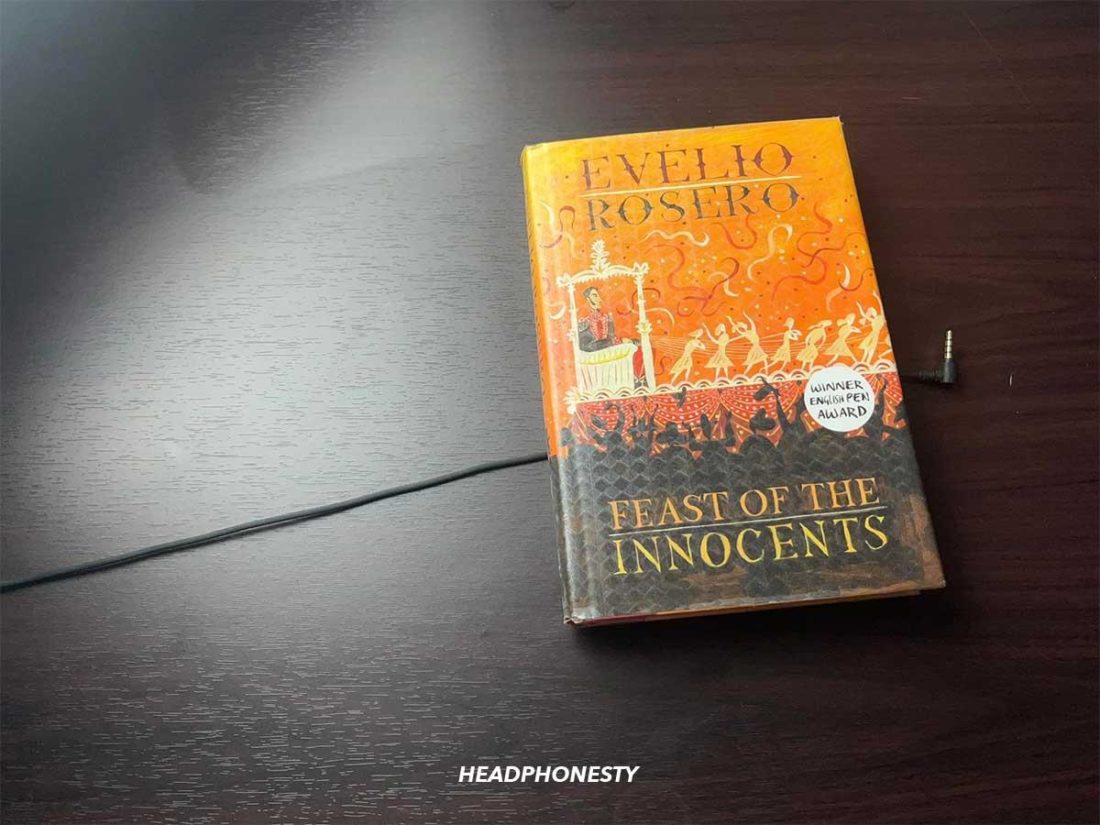
Excellent article many thanks
Thanks as well for reading. Cheers!
Very concise and helpful. Thanks for this!
Great to hear it helped. Cheers!
My headphones don’t work that way, it still sounds a lot quieter, and it keeps driving me crazy!
https://www.youtube.com/watch?v=_t6SiOnv1WE&ab_channel=BuddsyMedia this vid can show you how to fix it in under like 5 minutes whitout needing anything you only need the headphones/headset and your bare hands
This was very helpful and greatly appreciated, but I think the warning against the use of all heating elements goes overboard. The linked source reveals the melting points of all types of both PVC and Nylon to be far above the kind of heat a household hairdryer can generate. In fact, hairdryer temps (roughly 30-60ºC) almost perfectly line up with the “mold temperatures” of those materials – that is, the temp at which they are most pliable – which is kinda the goal, isn’t it?
Obviously that doesn’t mean we should all go out broiling our cables in unventilated closets. A hairdryer won’t melt or cause permanent damage to any cable of even halfway-decent quality, but any time you apply heat to plastic there’s a substantial risk of breathing in noxious and possibly deadly gases.
So I guess I was hoping that this article would be a little more honest with me that 1) yeah, heating up your cables works, but 2) it comes with risks, and 3) here’s some tips on how to proceed safely. Thanks for hearing me out – these quibbles aside, I love what you’re doing here!
How about flat with Y shaped cable? Mine is sony xb550ap, i bought it around 2021 and use it properly, and lately that thing is tangled, it’s looks like a tied up rubber fettuccine, it’s really annoying me.
Does this also apply with earphones?